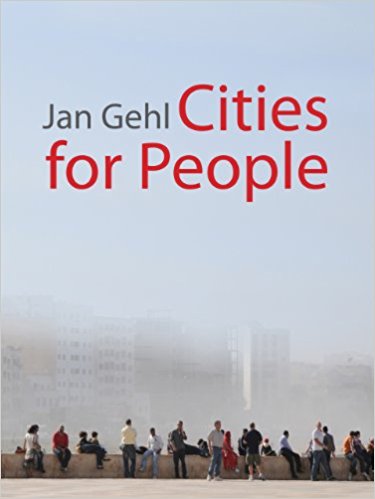TALK
Amanda Burden, TED, March 2014
… I knew that places like Paley Park didn’t happen by accident. I saw firsthand that they required incredible dedication and enormous attention to detail.

TALK
Amanda Burden, TED, March 2014
… I knew that places like Paley Park didn’t happen by accident. I saw firsthand that they required incredible dedication and enormous attention to detail.

BOOK
Jan Gehl, Island Press, 2010
Now, after many years, a great deal of knowledge has been amassed on the connection between physical form and human behavior. We have extensive information about what can and should be done. At the same time cities and their residents have become very active in crying out for people-oriented city planning. In recent years many cities in all parts of the world have made a serious effort to realize the dream of better cities for people. Many inspiring projects and visionary city strategies point in new directions after years of neglect.

SHORT FILM
Monocle, 9 July 2010
What’s great about this now is that it’s a great model for other cities across the country, who are beginning to think that maybe high quality design of public space isn’t something that comes after the fact, but is maybe something that we invest in now, in order to spur significant economic development and ensure a higher quality of urban life.
To visit the Field Operations website click here.

DOCUMENTARY
William H. Whyte, Project for Public Spaces, 1980
One major finding began to shine through, and I’ll now share it with you. ‘People tend sit where there are places to sit.’ This may not strike you as an intellectual bombshell, but this simple lesson is one that very few cities have ever heeded – they’re tough places to sit in.
This documentary is not available on line at this time of writing, but if you can get hold if it, it is a great watch.

BOOK
William H. Whyte, Project for Public Spaces, 1980
It is often assumed that children play in the street because they lack playground space. But many children play in the streets because they like to. One of the best play areas we came across was a block on 101st Street in East Harlem. It had its problems, but it worked. The street itself was the play area. Adjoining stoops and fire escapes provided prime viewing across the street and were highly functional for mothers and older people. There are other factors at work, too, and had we been more prescient, we could have saved ourselves a lot of time spent later looking at plazas. Though we did not know it then, this block had within it all the basic elements of a successful urban place.
For more from Project for Public Spaces, the nonprofit organisation founded by William H. Whyte, and the work they are doing around placemaking, click here.